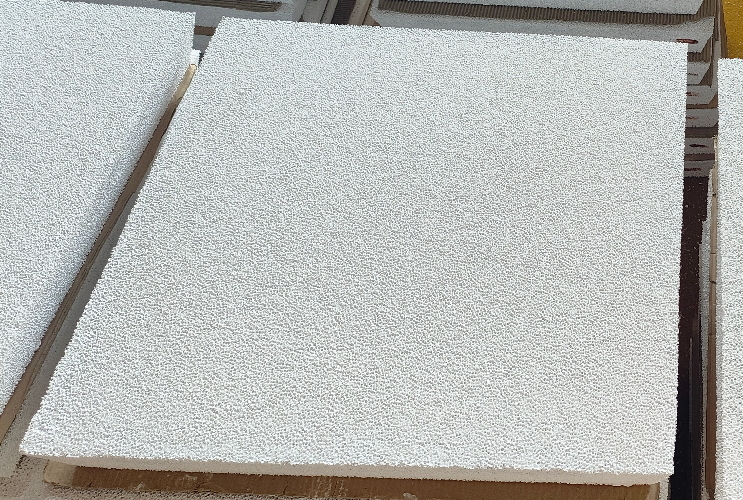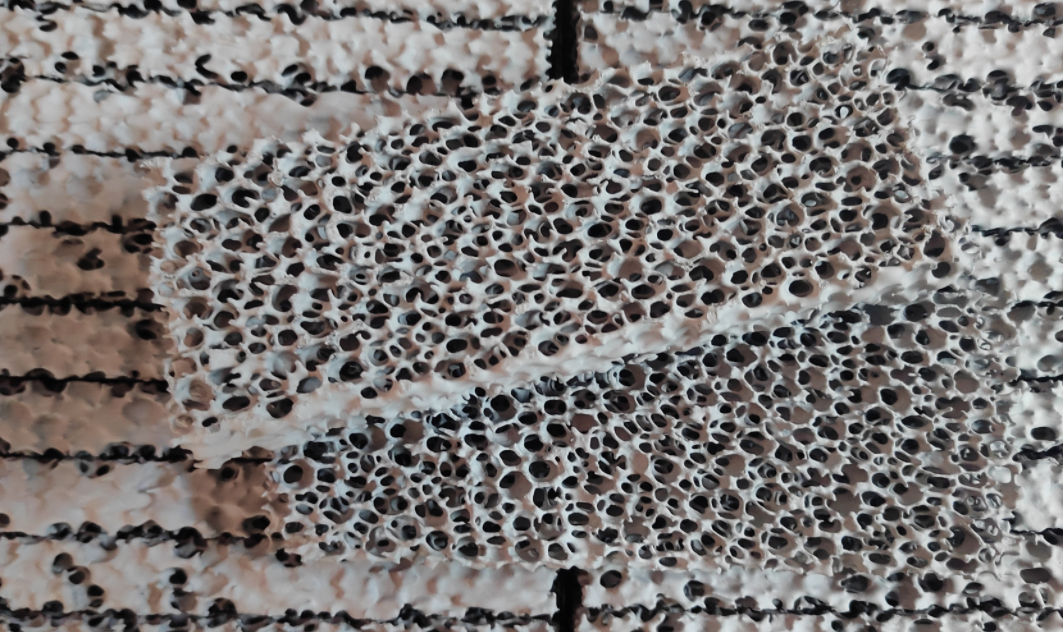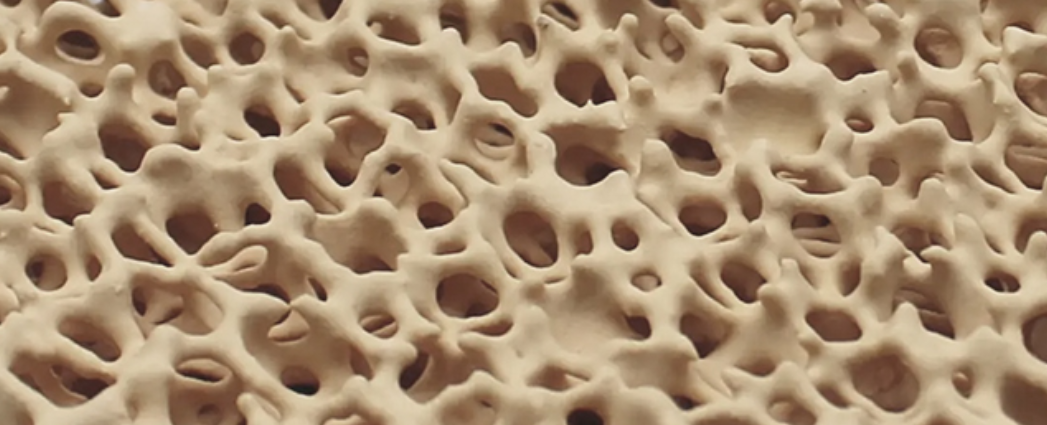Overview of Raw Material Categories
Refractory ceramics use many different raw materials. Each material serves a specific purpose in industrial use. I recommend grouping these materials by their chemical properties, use, and where you can find them.
Major Categories of Raw Materials
Alumino-silicate Raw Materials
- Includes fireclays, kaolin, and bauxite.
- Different alumina (Al₂O₃) and silica (SiO₂) ratios mark these materials.
- Fireclay bricks and high-alumina products are prime examples.
- Hard clays have low plasticity and high refractoriness. I suggest using them for high-grade bricks.
- Soft clays are more plastic. We use them in unshaped refractories.
- Bauxite is a key source of high-alumina refractories. China produces most of it, especially in Shanxi, Henan, and Guizhou.
Basic Raw Materials
- These consist of magnesite (MgCO₃), dolomite (CaMg(CO₃)₂), and chromite (FeCr₂O₄).
- You need these for steelmaking and cement kilns where basic slags are present.
- Magnesite and dolomite work well in furnace linings.
- Chromite is critical for magnesia-chrome bricks. It resists slag well. Its melting point is close to 2180 °C. Bulk density ranges from 2.5–3.0 g/cm³.
- Major chromite sources: South Africa, Kazakhstan, Turkey. Top producers include Glencore, Samancor Chrome, and Eurasian Resources Group.
Insulating Raw Materials
Examples: perlite, vermiculite, diatomite, and synthetic fibers.
These have low bulk density and high porosity. We use them to make lightweight refractory bricks and insulation boards. These help reduce heat loss.
Specialty Raw Materials
This group includes zircon (ZrSiO₄), synthetic mullite, bubble alumina, alumina, and advanced carbides or nitrides. Zircon has excellent chemical stability and low heat transfer. I recommend it for glass furnaces and acid-resistant refractories. Industrial zirconia creates multiple crystal forms. These work well for toughened refractories.
Alumina (Al₂O₃): Properties, Production and Main Applications in Refractory Ceramics
Alumina (Al₂O₃) is a key material for advanced refractory ceramics. It offers extreme hardness, high-temperature stability, and strong chemical resistance.
Grades, Composition, and Key Physical Data
Purity Levels:
- High-purity alumina (>99.9% Al₂O₃) works best for tough applications. It offers better transparency, chemical resistance, and dielectric properties.
- Common commercial grades include 99%, 95%, 92%, and 85%. Higher purity means greater bulk density and strength.
- Bulk density examples: 3.60 g/cm³ (92% alumina), 3.85 g/cm³ (99%), and up to 3.97 g/cm³ for top-tier materials.
- Some formulas add talc (in 85% alumina). This helps adjust mechanical or electrical features.
Physical and Mechanical Performance:
- Mohs hardness: 9—very abrasion-resistant, just below diamond.
- Bending strength: 255–350 MPa depending on purity.
- Compressive strength: 2,800–3,600 MPa.
- Elastic modulus: 290–380 GPa.
- Thermal endurance: Works well up to 1,700°C. Select pure grades can handle up to 1,925°C.
- Electrical insulation: Excellent. I see it used often in electronics.
- Thermal expansion coefficient: About 7–8 × 10⁻⁶ K⁻¹ (between 20-1000°C).
- Specific heat: About 920 J/(kg·K).
Reference Table: Typical Alumina Properties by Grade
| Al₂O₃ Grade (%) | Bulk Density (g/cm³) | Bending Strength (MPa) | Compressive Strength (MPa) | Elastic Modulus (GPa) | Mohs Hardness | Max Temp (°C) |
|---|---|---|---|---|---|---|
| 92 | 3.60 | 255 | 2800 | 290 | 9 | 1500 |
| 95 | 3.65 | 292 | 3300 | 340 | 9 | 1600 |
| 97 | 3.72 | 300 | 3400 | 350 | 9 | 1600 |
| 99 | 3.85 | 350 | 3600 | 380 | 9 | 1700 |
Extraction, Production, and Source Materials
Main Source:
Producers make commercial alumina from bauxite ore. The Bayer process dissolves bauxite in sodium hydroxide. It then separates sodium aluminate, precipitates it, washes it, and calcines pure alumina.
Natural corundum (ruby, sapphire) can serve as a source. But its rarity limits industrial use.
Processing: Manufacturers form most alumina ceramics by dry pressing or vacuum casting. They then sinter them at 1,650–1,990°C depending on grade.
Typical Industrial and Specialty Applications
- Electronics: Circuit substrates, dielectric layers, and resistors for high-frequency/voltage circuits.
- High-Temperature Use: Furnace linings, crucibles, kiln furniture, and wear-resistant linings.
- Chemical & Petrochemical: Liners in reactors, pipes, and tanks that face corrosive chemicals.
- Automotive and Defense: Engine components, heat sensors, armor plates.
- Medical Devices: Implants. I recommend these due to high biocompatibility and resistance to wear.
- Optics & Advanced Fields: Transparent alumina for lamp tubes, optical windows, laser components, X-ray parts, pressure sensors, and body armor (95–97.6% alumina grades).
Market and Material Insights
Global Market: Raw alumina cost varies by purity. High-purity grades command a big price premium. This is justified by their performance in harsh environments. These include oxidizing or reducing atmospheres at high temperature.
My View: I suggest careful selection of alumina grade. You need to factor in purity, mechanical needs, and thermal needs. This choice impacts refractory ceramic performance and cost-effectiveness.
Summary:
Alumina offers a strong mix of mechanical strength, hardness, thermal stability, and chemical inertness. Based on my experience, this makes it a top choice for premium refractory ceramics and tough industrial components.
Silica (SiO₂): Properties, Structure, and Applications in Refractory Ceramics
Silica (SiO₂) is a common raw material for refractory ceramics. You’ll find it in silica bricks and fused silica products. I like its high temperature resistance, chemical stability, and strong acid resistance. These qualities make it popular in many industries.
Chemical Composition and Key Characteristics
Silica Content: Over 93% SiO₂ (most contain 94–94.5%). The rest includes alumina (1–3%), iron oxide (up to 1.5%), calcium oxide (up to 2.5%), and trace minerals.
Structure: Silica refractory bricks have different crystal forms. These include quartz, cristobalite, and tridymite. These phases help with heat resistance and stability.
Fused Silica: We make this by melting crystalline silica. It forms a glassy structure. This gives it great thermal shock resistance. It also has a very low coefficient of thermal expansion.
Performance and Behavior in Service
- Acidic Slag Resistance: Great performance here. I recommend it for environments with acid corrosion concerns.
- Thermal Stability: It maintains strength at very high temperatures.
- Durability: It resists chemical attack and erosion well. This is true in glass and metal industries.
- Service in Gas Environments: SiO₂ can form stable suboxide gases (SiO) under oxidizing and reducing conditions. This can affect durability. Advanced coatings (like mullite on SiC ceramics) help manage this problem.
Industrial and Specialty Applications
- Glass Furnaces: We line these with silica bricks (>93% SiO₂). They resist high temperatures and corrosive glass melts well.
- Coke Ovens & Hot Blast Stoves: Silica bricks work great here. They handle acidic slags and severe heat.
- Ceramic Kilns: We use silica for bricks and structural parts.
- Fused Silica Crucibles: I suggest these for low expansion needs. They are vital for precision casting and crystal growth.
- Structural Use in Glazes and Clays: SiO₂ is often the main oxide. It makes up over 60–70% of clays. In container and floating glass, it can reach up to 70%.
Summary of Technical Data
| Property | Silica Refractory Brick | Fused Silica |
|---|---|---|
| SiO₂ Content (%) | >93 (most 94–94.5) | ~99+ |
| Melting Point (°C) | 1690–1710 | ~1710 |
| Cold Crushing Strength (MPa) | 35–40 | Lower, more resilient |
| Apparent Porosity (%) | ≤22–24 | Very low |
| Thermal Expansion (1000°C, %) | ≤1.28–1.3 | Very low |
| Main Applications | Glass, Coke Ovens, Kilns | Precision casting, molds |
| Acid Resistance | Excellent | Excellent |
| Shock Resistance | Good | Outstanding |
Market Insights and My Evaluation
Market Position: Silica bricks and fused silica are must-haves for industries that need extreme heat and chemical resistance.
My View: I recommend silica-based refractory materials for stability, acid resistance, and long-term durability. Based on my experience, fused silica is the best choice for rapid temperature changes. Its shock resistance is unmatched.
Summary:
SiO₂-rich refractory ceramics are the standard for acid resistance, heat tolerance, and flexibility. I believe silica’s unique properties make it essential for high-temperature uses. This is true for metal, glass, or ceramic industries.
Magnesia (MgO): Properties, Performance, and Essential Applications in Refractory Ceramics
Magnesia (MgO) is a vital raw material for refractory ceramics. I recommend it for high-temperature work because it offers excellent heat endurance, chemical stability, and strong mechanical properties.
Key Physical, Thermal, and Chemical Properties
Melting Point: MgO has one of the highest melting points among ceramic oxides. It ranges from 2800–3099 K (2527–2826°C). This allows use in extreme furnace conditions.
Thermal Performance:
- High heat flow (40–60 W/m·K, based on purity and temperature)
- Low electrical flow (electric resistivity ~10¹⁴ Ω·cm at room temperature)
- Strong resistance to thermal shock
Chemical Stability:
- Does not react with most molten metals (sodium, lead, nickel-based alloys)
- Resists chemical wear from slags. This makes it suitable for tough industrial settings.
Physical Features:
- Density: 3.58 g/cm³
- Appears as a white solid that absorbs moisture. Found in nature as the mineral periclase.
- Maintains strength during rapid heating and cooling. This cuts the risk of cracking or structural failure.
Forms, Products, and Industry Use Cases
MgO comes in these forms: Ceramic powders, high-temperature adhesives, specialty cements, crucibles, and bricks
Primary Applications:
- Magnesia bricks: I suggest these for lining steelmaking furnaces, cement kilns, and glass tanks. They can face molten slag and metal without breaking down.
- Crucibles: Perfect for melting non-ferrous and precious metals (nickel, uranium, platinum)
- Monolithic refractories: These include castables and ramming mixes. Use them for ongoing high-temperature lining repairs and construction.
- Electronic industry: Applied in substrate plates, setter plates, kiln furniture, and heater insulators
Market Example: In 2004, 56% of all MgO produced in the U.S. went to the refractory industry. This shows how critical it is in heavy manufacturing.
Performance Optimization, Additives, and Comparative Edge
Material Improvements:
Adding Al₂O₃ to MgO creates magnesium aluminate spinel (MgAl₂O₄). This boosts thermal shock resistance and mechanical density. Best results appear with around 10% alumina.
TiO₂ surface coatings on MgO bricks form magnesium titanate phases. These improve crack resistance under extreme heat cycling, especially when sintered above 1550°C.
Advantages Over Alternatives:
MgO beats most other ceramic oxides. It has a higher melting point and better slag resistance. I prefer MgO for jobs that need contact with molten materials.
It is cost-effective and easy to find. This supports wide use in refractory work around the world.
Expanding Applications and Supply
Emerging Uses: High-purity MgO now plays a bigger role in optics (infrared windows, specialty lenses). It also helps in advanced catalysts for CO₂ conversion and next-generation superconductors.
Raw Material Sourcing: Producers make it by heating magnesium carbonate or hydroxide. Natural periclase deposits serve as a backup source.
Common MgO Products and Examples
- Magnesia Bricks: Standard size is 230 × 114 × 65 mm. Used for primary furnace linings in steel production.
- MgO Crucibles: Used often for melting reactive metals like platinum and uranium.
- Monolithic Castables and Rammables: Applied for repairs and flexible linings in high-wear industrial furnace sections.
- Magnesia Filters: The foam ceramic filters used for metal filtration.
My Evaluation:
I see magnesia as the backbone material for settings where ultra-hot temperatures and aggressive chemical attack happen every day. Its mix of heat resilience, chemical stability, and low cost makes it irreplaceable. Industries like steel, glass, cement, and advanced technology rely on it. Pair MgO with additives like Al₂O₃ or TiO₂, and you get even better durability. Based on my experience, this makes it an adaptive solution for the future of refractory ceramics.
Other Major Raw Materials for Refractory Ceramics
Beyond alumino-silicate and basic raw materials, I want to discuss specialty minerals and synthetic options. These materials are essential for advanced refractory ceramics. They boost performance in demanding industrial settings.
Specialty Minerals and Synthetic Raw Materials
Zircon (ZrSiO₄):
Zircon stands out for its low heat transfer. It resists chemical attacks well. It also handles glass melts and acids with ease. Industrial-grade zirconia comes from zircon. It has three crystal forms: monoclinic, tetragonal, and cubic. I recommend partially stabilized zirconia for jobs needing strong thermal shock resistance. It creates tough refractory bodies. Desilicated zircon goes into electrofused AZS refractories. This addition improves corrosion resistance in glass furnaces.
Bubble Alumina:
This synthetic material has hollow alumina spheres. Bubble alumina bricks insulate heat well. They work at temperatures above 1800°C. Their structure creates porosity above 50%. This keeps bulk densities as low as 1.1 g/cm³. I suggest bubble alumina-based refractories for high-performance insulating bricks. Use them where you need light weight and maximum temperature resistance.
Zirconia-Mullite:
Producers make this from alumina, kaolin, and zircon. They sinter it at 1300–1700°C. Adding more zircon improves how the product sinters. It lowers shrinkage. It raises thermal shock resistance and density. I use zirconia-mullite linings in furnaces that face rapid temperature changes. Data shows that adding zirconia to alumina-mullite refractories can boost thermal shock resistance by over 30%.
Synthetic Mullite (3Al₂O₃·2SiO₂):
Synthetic mullite resists high temperatures well. It expands very little with heat. I find it vital for refractories facing steep temperature changes and tough operating cycles.
Chromite/Chromia (Cr₂O₃):
I choose these for their chemical strength and oxidation resistance. Chromite is critical in ferroalloy furnaces and chemical reactors. Magnesia-chrome bricks handle furnace temperatures over 2000°C. I recommend them for glass tank regenerators.
Spinel (MgAl₂O₄):
This comes from magnesia and alumina. Spinel refractories resist slag attacks well. I value them for thermal shock performance. I see them used for steel ladle linings and heavy-duty furnace walls.
Titania (TiO₂):
Manufacturers add this to refractories to fight corrosion and boost strength. You find TiO₂ in neutral and basic refractory mixes. I use it where aggressive slags or metals exist.
Andalusite and Kyanite Group Minerals:
These convert to mullite during use. This change improves thermal shock resistance. It also boosts dimensional stability. The expansion from this transformation helps refractories handle fast heating and cooling.
My Perspective on Specialty Raw Materials
I view these advanced materials as game-changers for refractory ceramics. They work in specialized industries like steelmaking, glass production, and chemical processing. Standard refractories fail in these settings. Based on my experience, these materials lift performance, durability, and cost-effectiveness. They excel in high-corrosion environments. They handle rapid temperature cycling. They survive harsh reducing atmospheres. I believe their role will be critical for the next generation of high-performance refractories.
Supporting and Minor Materials in Refractory Ceramics
Supporting and minor raw materials keep refractory ceramics working well for a long time. These materials include metallic anchors, chemical binders, additives, fillers, and reinforcement fibers. How you select and blend them affects installation performance. It also affects structural stability and how long refractory linings last in harsh industrial environments.
Metallic Anchors and Fixing Systems
Purpose: These secure refractory linings to steel or concrete structures in furnaces, kilns, and reactors.
Materials Used: Stainless steel, Inconel, and other heat-resistant alloys.
Design Types:
- V-anchors and Y-anchors for monolithic castable linings
- Studs with locking caps for ceramic fiber linings
- L-anchors and tiebacks for brick assemblies
- Hexmesh systems for thin, erosion-resistant refractory lining. These can flex with movement. They handle thermal expansion well.
Industry Example: In thin linings, anchors may be ¾ inch thick. This avoids thermal stress failure. It allows for rapid heating and cooling.
Binders, Additives, and Chemical Modifiers
Role: These improve workability. They bind particles. They control behavior during shaping and heat treatment.
Common Binders: Clay, sodium silicate, various phosphates, and organic resins.
Additives:
- Plasticizers and dispersants enhance particle packing and ease mixing.
- Hardeners speed up setting and boost initial strength.
Typical Dosage: Binders and additives combined make up 2%–10% of a refractory castable by weight. You tailor this to the exact formula and required performance.
Secondary Phases, Fillers, and Lightweight Aggregates
Function: These modify physical properties. They change refractoriness, density, and heat insulation.
Examples of Materials:
- Calcium carbonate (CaCO₃), dolomite, and talc work as fillers. They optimize cost and tune properties.
- Bubble alumina and lightweight aggregates lower density. They improve thermal insulation.
- Fiber reinforcements (ceramic, glass wool, mineral wool) strengthen the matrix. They increase resistance to thermal shock.
Performance Data: Fiber additions can reduce thermal conductivity by 20–60% compared to dense materials. This is crucial for energy-saving furnace linings.
Industrial Fibers and Synthetic Additives
Material Types: Refractory ceramic fiber (RCF), glass wool, rock wool, mineral wool, and synthetic mullite fibers.
Benefit: I recommend these materials because they work as structural reinforcements and secondary insulating phases. They provide:
- Enhanced crack resistance
- Superior thermal stability in rapid heating and cooling cycles
My Evaluation:
Based on my experience, choosing the right supporting and minor materials makes a huge difference. It separates a standard product from a high-performance refractory. I suggest using Hexmesh anchor systems for thin linings. They work very well. Fiber reinforcements and specialty fillers are critical. They reduce heat loss and extend service life. You need to match supporting materials to your operating conditions and intended lifespan. This is the key to efficiency and cost savings in refractory ceramic installations. I’ve seen this approach save companies thousands in maintenance costs.
Summary
I’ve worked with refractory ceramics for years. Understanding raw materials is just the start. The real magic happens when you match the right material to your specific challenge.
Are you fighting corrosive slags in a steel furnace? Or managing thermal shock in a glass kiln? Each raw material I’ve discussed offers unique solutions.
I suggest you view material selection as an opportunity. It’s not a technical burden. It helps you improve performance and cut costs.
Based on my experience, industrial efficiency starts with smart choices today.







